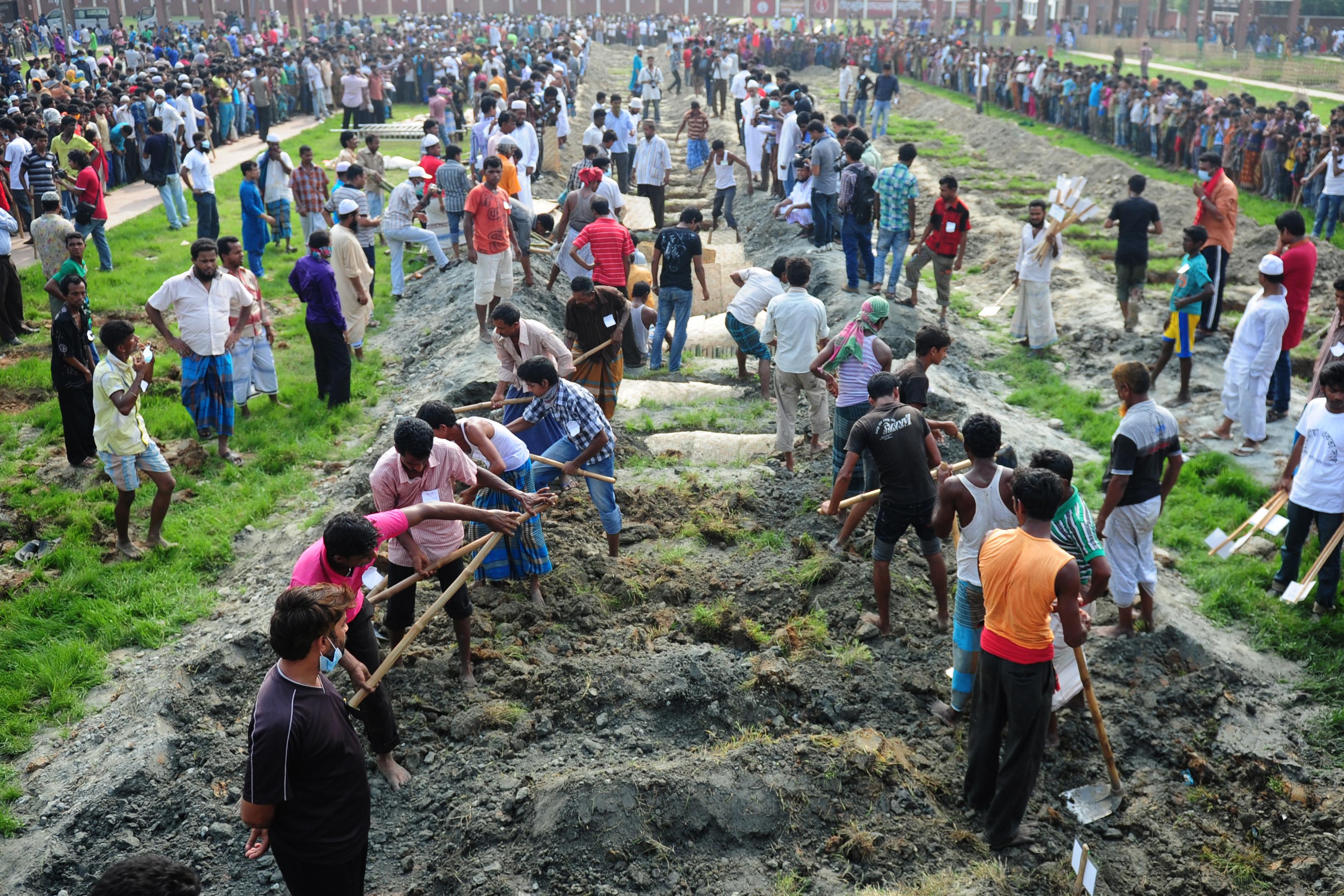On Monday, local police in Bangladesh called off the search for bodies in the rubble of a garment factory building that had collapsed. After nearly three weeks of searching, authorities had recovered a staggering 1,127 bodies, making the tragedy the worst accident in the global garment industry’s history. Today, we’re again counting bodies after the industry’s latest fatal accident in south Asia. The Associated Press with the details:
The ceiling of a Cambodian factory that makes Asics sneakers collapsed on workers early Thursday, killing two people and injuring seven, in the latest accident spotlighting the often lethal safety conditions faced by those toiling in the global garment industry. About 50 workers were inside a workroom of the factory south of Phnom Penh when the ceiling caved in, said police officer Khem Pannara. He said heavy iron equipment stored on a mezzanine above them appeared to have caused the collapse.
The Cambodian factory, thankfully, is much smaller than the collapsed building in Bangladesh, which housed three individual garment factories, so the death toll from today’s accident is not expected to climb anywhere near as high. Still, the timing of the accident—22 days after the complex in Bangladesh first collapsed—will likely add additional momentum to the international outcry for mulitnational retailers to take action to ensure the safety of the low-wage workers at their suppliers. While that effort has so far largely focused on Bangladesh in specific, the Cambodian accident will, at least temporarily, broaden the scope of the debate to include other countries.
As the New York Times notes, the Cambodian collapse could also spell trouble for Asics, which currently enjoys a rather shiny corporate image:
He said Asics “offered its deepest sympathies” to the victims and their families, and that the company would consider actions to revamp safety measures at its overseas suppliers. … Popular with runners, Asics has been particularly successful in the American market, where it emphasizes corporate responsibility. According to the company’s Web site, the Asics name is an acronym “derived from the Latin phrase, Anima Sana In Corpore Sano — a sound mind in a sound body.”
The outcry that began as the death toll in Bangladesh steadily climbed into four figures has already prompted several global companies to take action there. More than a dozen European retailers—including H&M, the biggest garment buyer in the country—have signed on to an international safety pact that would require the companies to pay for inspections and upgrades in Bangladeshi factories over the next half decade. Major American clothing chains, however, have so far stayed on the sidelines. Their rationale, the Washington Post explains, is that they fear doing so would expose them to excessive liability in court, particularly at home.
